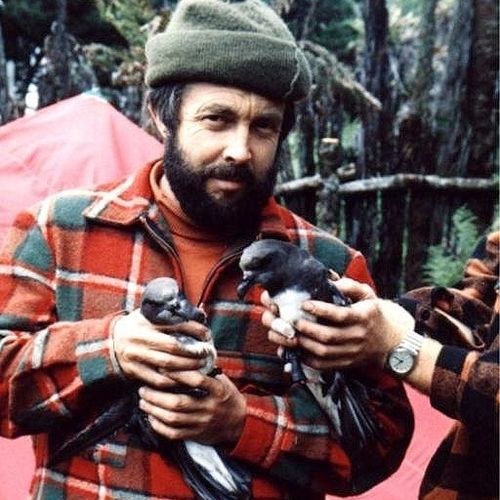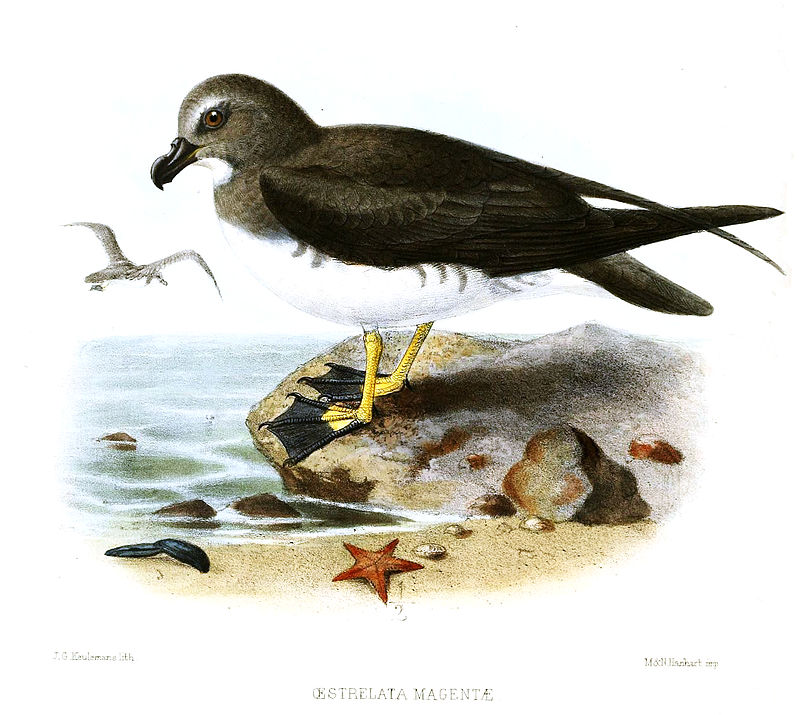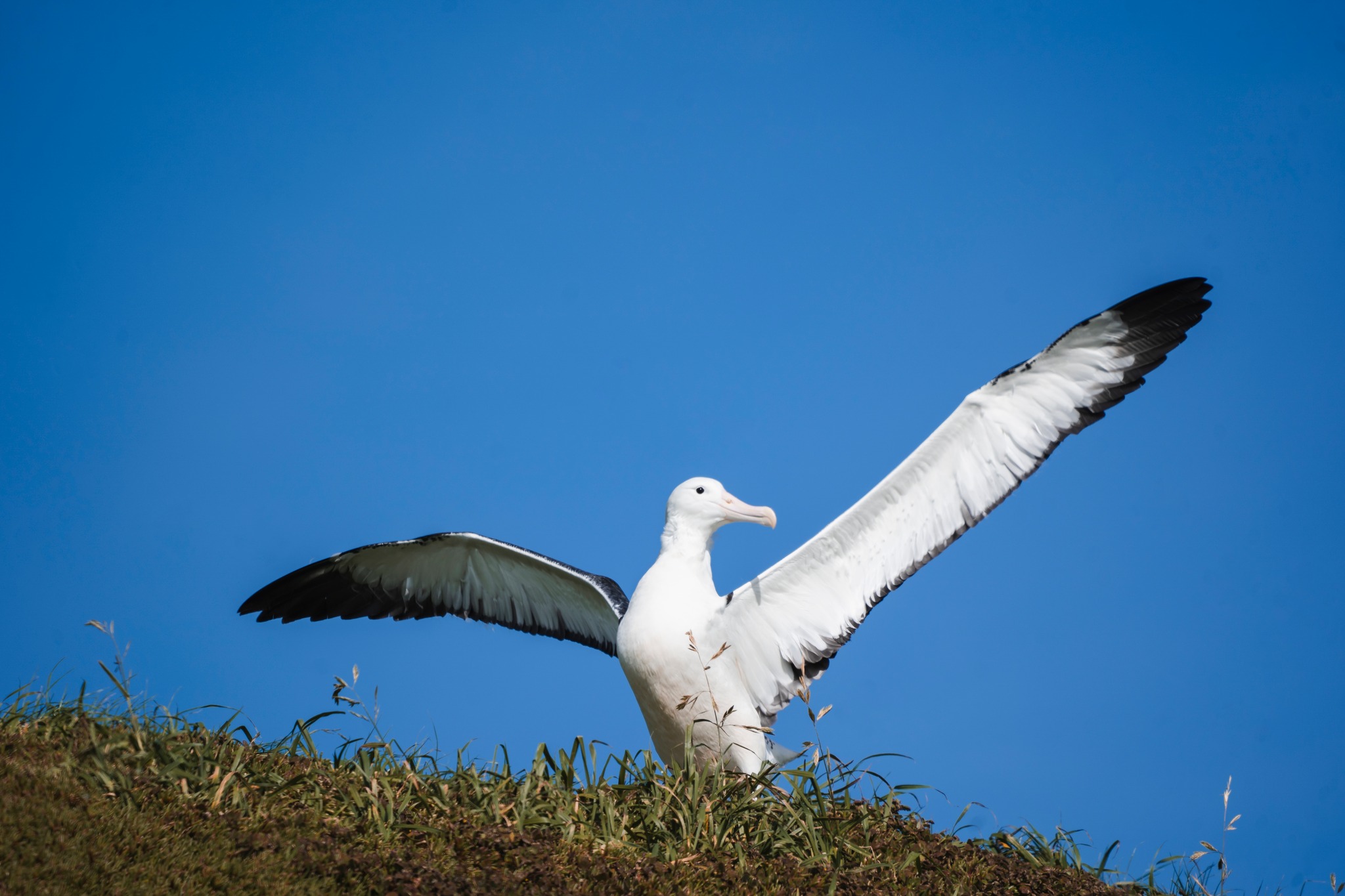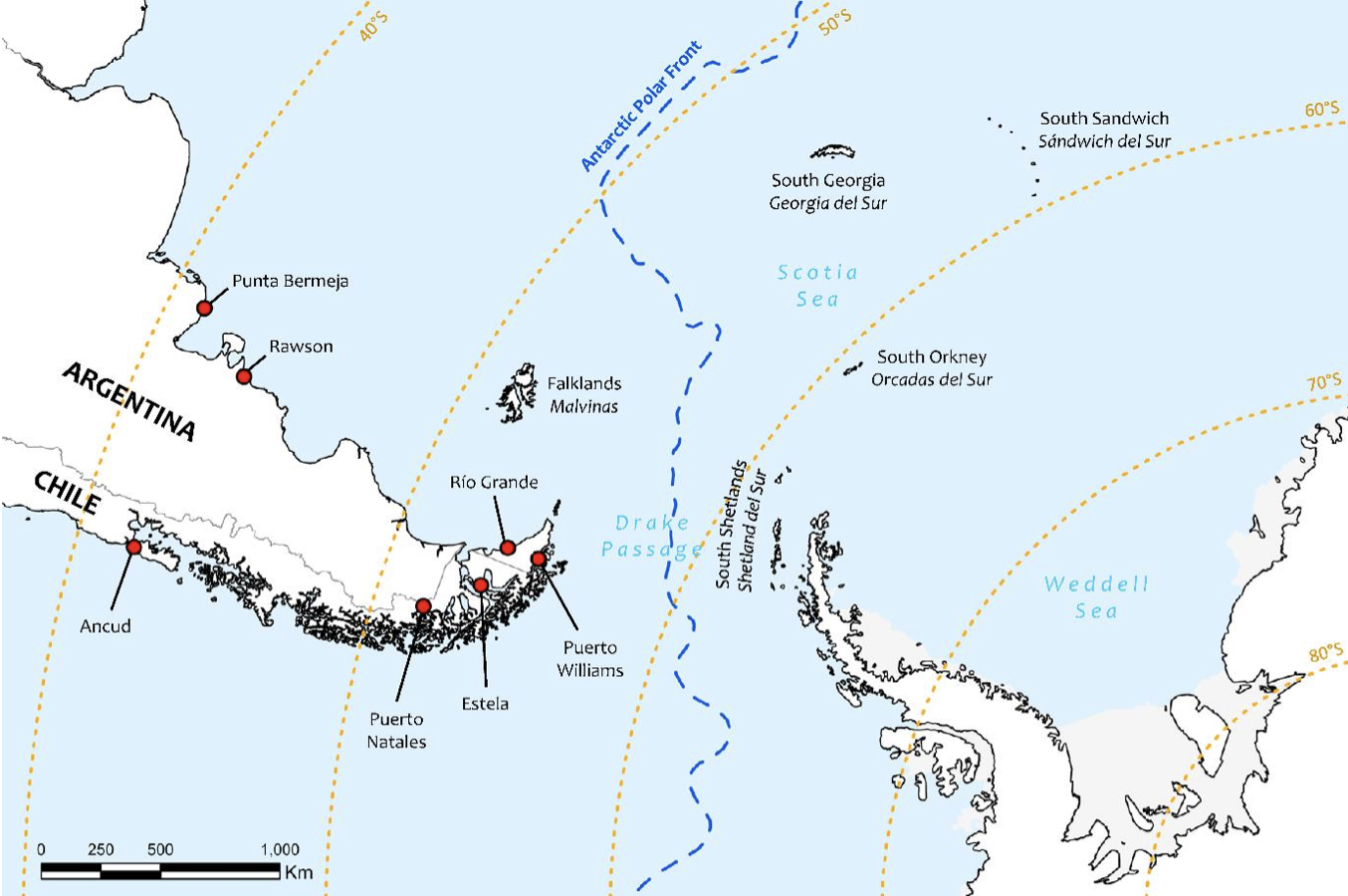
David Crockett with two Magenta Petrels/Chatham Island Taikos
David Edward Crockett QSO* (25 March 1936 - 24 August 2023) of Whangarei, New Zealand was responsible for rediscovering the globally Critically Endangered and Nationally Critical Magenta Petrel or Chatham Island Taiko Pterodroma magentae in the Tuku Gully in the south west of the main Chatham Island in 1978. The petrel was previously considered to be extinct. David summarized his decade of patient searching in a paper published in the New Zealand journal Notornis in 1994 that covered aspects of the petrel’s behaviour, habitat, morphology and ecology. The population remains tiny with a total estimated population of fewer than 200 birds and 33 breeding pairs that is growing slowly. It is now the subject of active conservation, notably predator control of feral cats and pigs and rodents, fencing, and translocations, by the New Zealand Department of Conservation and the Chatham Island Taiko Trust (watch a four-minute video here).

A Magenta Petrel/Chatham Island Taiko in the hand, photograph by Graeme Taylor, Department of Conservation
I met David only once, at the ICBP Seabird Conservation Symposium held in Cambridge, UK in August 1982, with its proceedings published in 1984. He, along with a large New Zealand contingent, proved to be a convivial group, and added much to the enjoyment of the symposium that was held in King's College. I well remember a magical evening during the symposium with him and the other Kiwis listening to the New Zealand Youth Choir singing in the iconic King’s College Chapel. The closing dinner in the college’s impressive Georgian Gothic Hall was also a grand affair, with what I remember as being madrigals sung from a balcony between each course. I also learnt which way to pass the Port decanter (always to the left) and somewhere still have the menu signed by David and the other symposium attendees.

A 19th Century hand-coloured plate of a Magenta Petrel by Dutch illustrator Johannes Gerardus Keulemans. Not a realistic pose!
Every decent person should leave a legacy. David Crockett left us with a whole species – and a handsome seabird at that. Surely a legacy to be proud of for any marine ornithologist. His funeral and his life of 87 years will be celebrated at Christ Church, Whangarei on 31 August 2023.
Ave atque vale, David.
References:
Crockett, D.E. 1979. Rediscovery of the Chatham Island taiko solved century-old mystery. Forest & Bird 13: 8-13.
Crockett, D.E. 1994. Rediscovery of Chatham Island taiko Pterodroma magentae. Notornis (Supplement) 41: 49-60.
Croxall, J.P., Evans, P.G.H. & Schreiber, R.W. (Eds). 1984. Status and Conservation of the World's Seabirds. International Council for Bird Preservation Technical Publication 2. 778 pp.
Imber, M.J., Crockett, D.E., Gordon, A.H., Best, H.A., Douglas, M.E. & Cotter, R.N. 1994. Finding the burrows of Chatham Island taiko Pterodroma magentae by radio telemetry. Notornis (Supplement) 41: 69-96.
Imber, M.J., Taylor, G.A., Tennyson, A.J.D., Aikman, H.A., Scofield, R.P., Ballantyne, J. & Crockett, D.E. 2005. Non-breeding behaviour of Magenta petrels Pterodroma magentae at Chatham Island, New Zealand. Ibis 147: 758-763.
Lawrence, H.A., Millar, C.D., Imber, M.J., Crockett, D.E., Robins, J.H., Scofield, R.P., Taylor, G.A. & Lambert, D.M. 2009. Molecular evidence for the identity of the Magenta petrel. Molecular Ecology Resources 9: 458-461.
Lawrence, H.A., Scofield, R.P., Crockett, D.E., Millar, C.D. & Lambert, D.M. 2008. Ancient genetic variation in one of the world's rarest seabirds. Heredity 101: 543-547.
Lawrence, H.A., Taylor, G.A., Crockett, D.E., Millar, C.D. & Lambert, D.M. 2008. New genetic approach to detecting individuals of rare and endangered species. Conservation Biology 22: 1267-1276.
*David Crockett was made an Ordinary Companion of the Queen's Service Order for Public Services in 2000 (click here). The order was established by royal warrant of Queen Elizabeth II on 13 March 1975 and is used to recognise "valuable voluntary service to the community or meritorious and faithful services to the Crown or similar services within the public sector, whether in elected or appointed office”.
John Cooper, Emeritus Information Officer, Agreement on the Conservation of Albatrosses and Petrels, 29 August 2023.
 Successful 2022 ACAP Secondment Applicant, Cristián Suazo, from Chile. ACAP Party, Argentina is hosting Cristián for his Secondment, titled: Multi-fishery interactions of sympatric black-browed and grey-headed albatrosses from the Diego Ramírez Islands: An isotopic and tracking approach
Successful 2022 ACAP Secondment Applicant, Cristián Suazo, from Chile. ACAP Party, Argentina is hosting Cristián for his Secondment, titled: Multi-fishery interactions of sympatric black-browed and grey-headed albatrosses from the Diego Ramírez Islands: An isotopic and tracking approach
 English
English  Français
Français  Español
Español  Figure 1 from the paper: Locations of each vessel conducted the experiment. Each dot represents each set the experiment was carried out.
Figure 1 from the paper: Locations of each vessel conducted the experiment. Each dot represents each set the experiment was carried out.
 Figure from the Statement. Map of the southern tip of South America and western Antarctica, indicating localities and island groups mentioned in the text. Notable locations in South America mentioned in the text are denoted by a red circle.
Figure from the Statement. Map of the southern tip of South America and western Antarctica, indicating localities and island groups mentioned in the text. Notable locations in South America mentioned in the text are denoted by a red circle.

